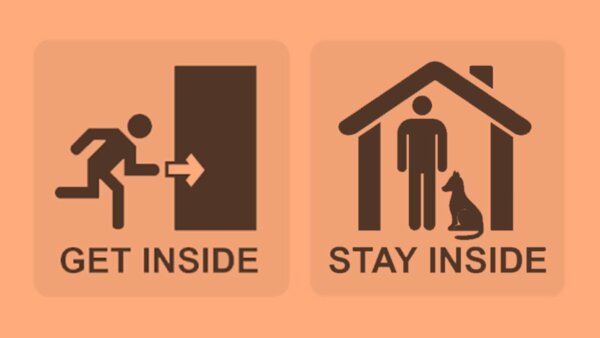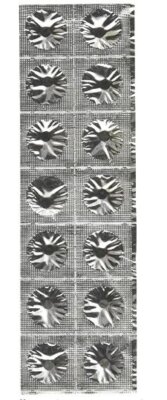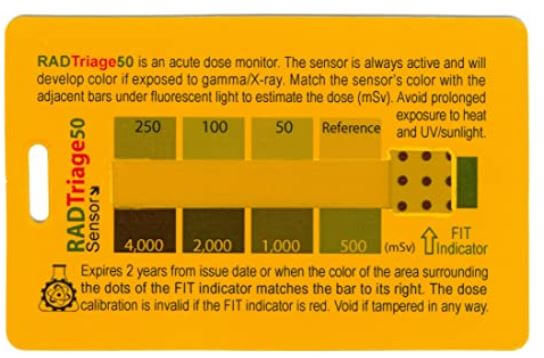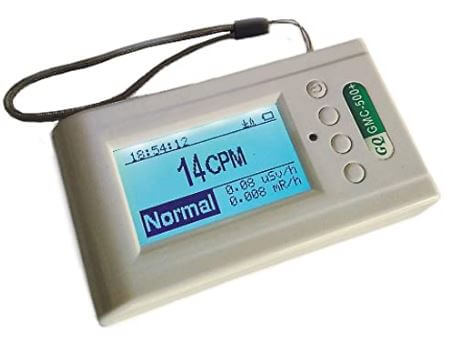Should we prepare for a nuclear emergency?

After several years of quiet about accidents or attacks involving nuclear energy, suddenly we find it again in the headlines. In Ukraine, a nuclear emergency was threatened when the Chernobyl nuclear power plant was hit by a Russian missile and experienced an explosion and fire. That situation may have been contained, but the danger isn’t over. And as I write this, European countries and allies – including the U.S. – are considering how to respond to Russia’s threat of using nuclear weapons in its bid to take over Ukraine.
At the same time, from the other side of the world, we hear that earlier this week North Korea conducted its largest intercontinental ballistic missile test ever. It looks as though this newest weapon might be able to deliver nuclear warheads anywhere in the United States.
So the headline on this Advisory isn’t meant to be a scare tactic. It IS meant to make sure your general preparedness knowledge includes a better understanding of nuclear emergencies!
Important: know the difference between a nuclear accident and a nuclear attack.
Each of these could be considered a nuclear emergency, but there’s a big difference in how you might have to respond.
- Accidents to nuclear reactors have been caused by earthquakes, tsunamis and mistakes by people running the plant. When for whatever reason the cooling fails, it follows that equipment overheats, pipes burst and ultimately the reactor “melts down.” Radiation can be released into the air and the “plume” is spread by the winds.
- A deliberate attack with a nuclear weapon could have a much greater impact. Even a small “tactical” weapon could cause a violent blast and fireball followed by an immediate release of radiation into the air. A full-fledged atomic bomb could repeat what happened in 1945 at Hiroshima. We’ve all seen those mushroom pictures.
Preparing for a nuclear emergency is pretty straightforward.
If you are caught in the middle of an explosion, there’s not much you can do to protect yourself. There’s a reason why nuclear weapons aren’t used in war.
But if you have any warning at all, here are the steps as recommended by the U.S. Government.
First, protect yourself from the blast itself!
If you are caught outside without warning, and you see the flash, get down! Face into the ground, keep your hands under your body. Protect exposed skin from heat and debris. As soon as possible, get up and take shelter to protect yourself from the radioactive fallout that is on its way.

Immediately get into to the nearest building. Head to the basement or to an interior room with no windows. Brick and cement block buildings are safest. Bring your pet in, too. These reminder images come from the CDC.
Next, get inside. Your goal is to be inside before the fallout arrives!
Fallout is like dust. It floats and ultimately comes down onto the ground. Whatever it touches it contaminates. Fallout gives off the most radiation in the first few hours after the blast. As time goes on, it weakens.
To repeat, seek out shelter below ground or in the middle of a building. Close windows, block fireplace, turn off A/C and fans to keep fallout from getting in.
If you were outside and believe you have been contaminated, as soon as you are safe inside remove your clothing and wash skin and hair with plain water. Gently wash pets, too. Seal contaminated clothing in plastic bags.
Once inside, plan to stay inside until the “all clear” is sounded. Assume at least 24 hours.
Sheltering in place after a nuclear emergency means . . .
- Do NOT try to reunite with family – going outside may contaminate or re-contaminate you!
- Be sure you have an emergency crank or battery-operated radio so you can get the news and hear the all-clear.
- Use supplies of clean food and water – NOT food or water that may have been exposed to radiation!
If you live in a “target location” for a deliberate nuclear strike, don’t wait. Take action now to prepare for a nuclear emergency.
A target is most likely going to be a military installation or a nuclear reactor. We have more than 90 nuclear power plants in the U.S., and over 4,500 military installations.
- Find out if you live or work near a target! You can search for “military bases near me” to get Google’s local map with red pointers. And you can find a map showing nuclear power plants here: http://www.nrc.gov/info-finder/reactor/ Most reactors are in the eastern part of the U.S.
- Find out your local government’s “emergency plan” for a nuclear disaster at the target location. The plan probably involves evacuation.
- Have a Go-Bag packed so you can grab it if evacuation is called. Hopefully your car is half full of gas or fully charged.
- If evacuation is unrealistic, be ready to seal yourself into your house.
- Have a supply of potassium iodide (KI). It can help block radioactive iodine from being absorbed by the thyroid gland. The thyroid is the part of the body that is most sensitive to radioactive iodine. Potassium iodide is nonprescription and FDA approved. You’ll need enough for every family member for several days. Pills cost around a dollar each.
- You may want a way to measure radiation levels. Our bodies can manage exposure to low levels of radiation. Very high levels can cause immediate burns and sickness, as well as long term health problems including cancer.
Here are some products we have researched and recommend as potential additions to your emergency supplies. Click on links to get current prices and full details at Amazon, where we are Associates.
KI tablets, USP, 130 mg. 14 count.

As you are shopping, consider the make-up of your family, and whether it would be easier for you to have smaller tablets (adults take two, child takes one) or even liquid (would have to be mixed with something). This is an inexpensive item so get a big enough supply that you don’t have to worry about running out. (Click on link above the image to get current price and how to use. These items go quickly; there are other options if these tablets are out of stock.)
For a better understanding of what’s going on around you, consider a radiation detector. Prices at Amazon range from under $20 to well over $500 so be sure to shop carefully! Here are two examples. The first one, a simple card, would be very handy; it doesn’t require any maintenance or batteries.
Personal Radiation Detector for Wallet or Pocket

RADTriage FIT Personal Radiation Detector for Wallet or Pocket, Nuclear Radiation Detector, Electromagnetic Field Radiation Detector, Anti Radiation Dosimeter, Ready-to-Go Portable Radiation Detector. Store in refrigerator and lasts for years.
Full Featured Geiger Counter with LED readout and Audio Alarm

GQ GMC-500Plus Geiger Counter Nuclear Radiation Detector Monitor Dosimeter. Two tubes detect wide range of levels; lithium battery. Click link above the image for full details at Amazon.
Be sure to read the useful comments from purchasers!
Older folks know all about preparing for a nuclear emergency. If you’re younger, this may be new.
Please share this with the right people. And pick up supplies that make sense for you. I hope we’ll never have to test your preparedness on this one.
Virginia
Your Emergency Plan Guide team
